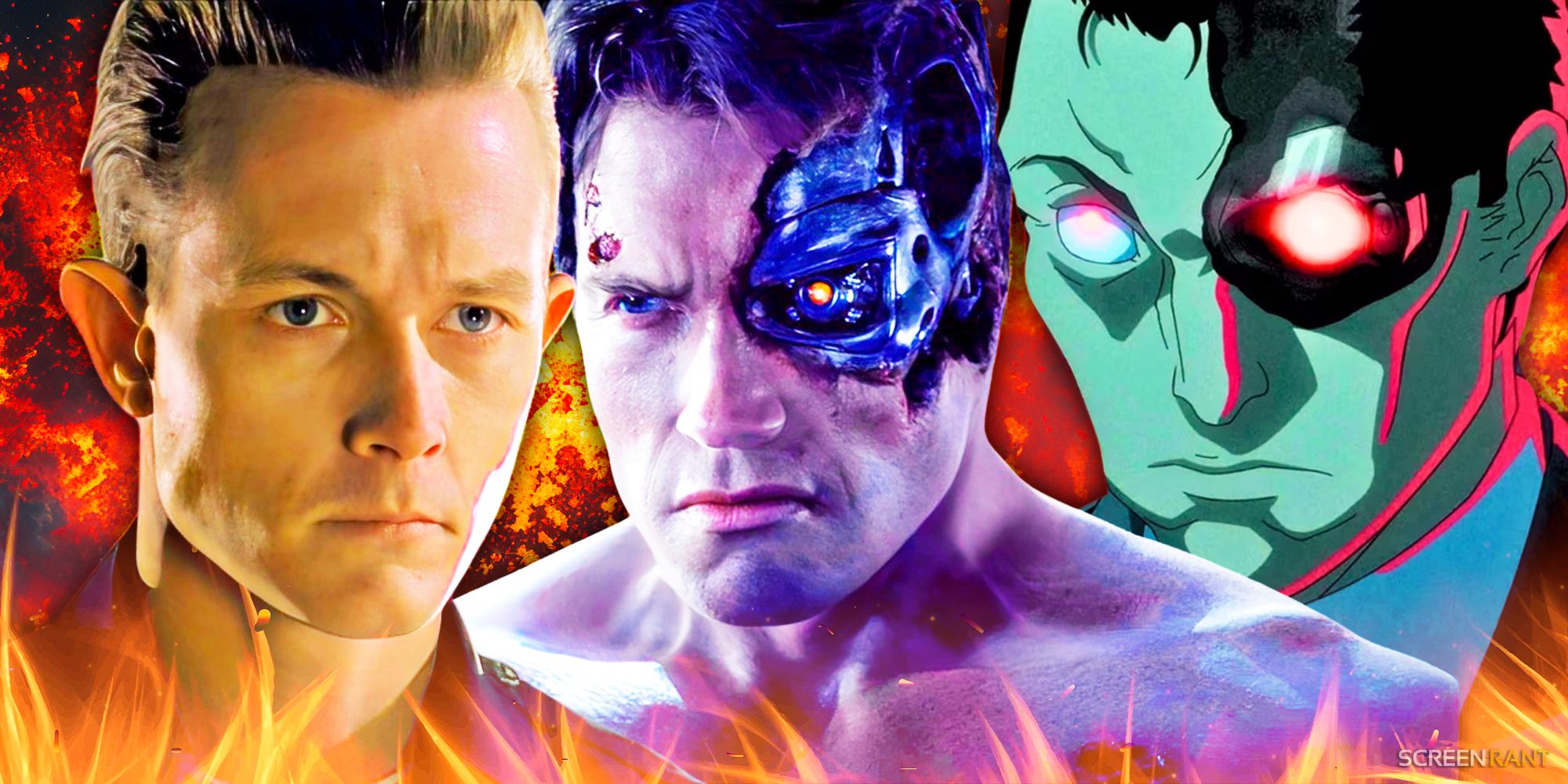
Terminator’s Time Travel Rules Finally Make Sense (It Only Took 40 Years)
Warning: Spoilers ahead for Terminator Zero.
Terminator Zero offers a simple yet effective explanation for how the Terminator franchise’s time travel works. Set in 1997 hours before Judgment Day, Terminator Zero’s timeline ties into the first two movies but takes the story in a very different direction. While most Terminator movies and TV shows take place in their own continuity, one recurring aspect of the franchise is the confusing time travel rules. Time travel is arguably paradoxical by definition, but Terminator hasn’t always made an effort to avoid plot holes when it comes to its alternate futures and pasts.
Terminator Zero also takes place in 2022 at the height of the human-machine war. Similar to the original movies, both Skynet and the Resistance are about to send agents to the past. This time, however, Skynet and humanity have somewhat of a common enemy – Kokoro. The artificial intelligence created by Malcolm Lee will become more powerful than Skynet at some point, which is why both the Terminator and Eiko want to destroy it. Toward the end of Terminator Zero, we learn how Eiko was prepared for her time travel mission, and what she was told about how it all works.
Related
Terminator Zero Cast & Character Guide
Terminator Zero, Netflix’s sci-fi action anime series set within the Terminator universe, introduces a new cast of characters to the franchise.
Terminator Zero Perfectly Explains Terminator’s Time Travel Rules
The Prophet Confirmed Every Change To The Past Creates A Branched Timeline
Before Eiko was sent from 2022 to 1997, she had a conversation with the Prophet, an important figure within the Resistance. The Prophet was to prepare Eiko for her time travel mission and started by asking the soldier if she had ever been to the past. Once Eiko answered “Not that I know of,” the Prophet pointed out how this was a paradox by itself. The Prophet then explained that, whenever someone goes back in time, a new timeline is created. In other words, the future Eiko knew it would no longer exist for her once she traveled through time.
A version of Eiko had a son in 2024, Malcolm, who grew up during the war and eventually went back in time.
The Prophet told Eiko that, while people tend to perceive time as a line, it’s actually a much more unstable entity with countless ramifications. Every time someone goes back in time – be they a resistance soldier tasked with saving Sarah Connor or a Skynet Terminator sent to kill John – the timeline they knew is written out of existence, and a new one is born. Eiko grew up in a world decimated by the war between Kokoro and Skynet, and her mission was to prevent Malcolm Lee from ever activating his A.I.
Why Terminator’s Time Travel Has Always Been So Confusing
Terminator Didn’t Always Think Its Time Travel Plot Through
The problem with Terminator’s time travel is that it was not always consistent, from the technicalities of how the machine works to the timeline implications of soldiers and Terminators being sent to the past. The entire plot of The Terminator is based on a paradox – Kyle Reese is sent by John Connor to protect Sarah, falls in love with her, and becomes John’s father. While The Terminator’s paradox was part of the movie’s story, the franchise’s time travel rules continued to get more confusing with each entry.
|
Terminator Films & TV Shows |
Release Date |
|---|---|
|
The Terminator |
1984 |
|
Terminator 2: Judgment Day |
1991 |
|
Terminator 3: Rise of the Machines |
2003 |
|
Terminator Salvation |
2009 |
|
Terminator: The Sarah Connor Chronicles |
2008–09 |
|
Terminator Genisys |
2015 |
|
Terminator: Dark Fate |
2019 |
|
Terminator Zero |
2024–Present |
The Terminator plays with the idea that time is a closed loop and that Skynet’s mission to kill Sarah is exactly what leads her and Kyle to have a son who grows up to become the leader of the Resistance. However, in Terminator 2: Judgment Day, the heroes ultimately change history by avoiding – or postponing, according to Terminator 3: Rise of the Machines – Judgment Day. T2 also doesn’t properly explain from which version future the T-1000 and the new T-800 come, an issue that every other Terminator movie would also have.
Terminator Zero’s Time Travel Rules Work (And Make The Movies Better)
Terminator Zero’s Time Travel Makes Just Enough Sense For It To Work
The best, most consistent way of looking at the Terminator franchise is by accepting that time travel creates alternate timelines. While this was never a well-defined general rule in the franchise, it is arguably the only way of making everything work. Now, not only has Terminator Zero made the alternate timeline explanation canon, but it also spent a few minutes explaining it. Inconsistent time travel rules didn’t get in the way of T2 being a fantastic movie, but it’s good that Terminator Zero made an effort in that regard.
There have been very few proper sequels in the
Terminator
franchise, as most entries after
T2
have tried to course-correct (…)
Terminator Zero’s alternate timelines explanation also works from a behind-the-scenes standpoint. There have been very few proper sequels in the Terminator franchise, as most entries after T2 have tried to course-correct and ended up cherry-picking which movies they were going to consider canon. Rise of the Machines was a direct sequel to Terminator 2, but it was ignored by The Sarah Connor Chronicles. Terminator: Salvation moved Judgment Day to a later date compared to T2; Terminator Genisys introduced an all-new timeline, and Terminator: Dark Fate ignored everything that had come out after T2.

